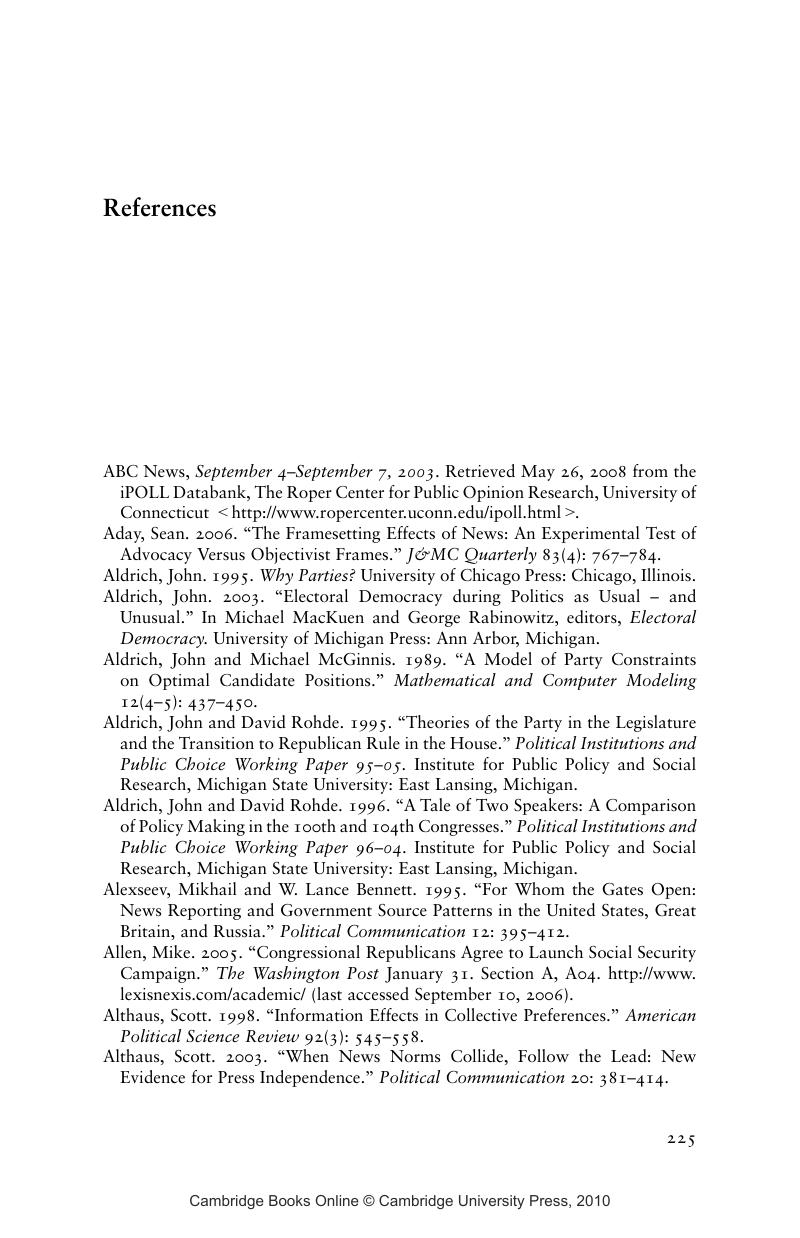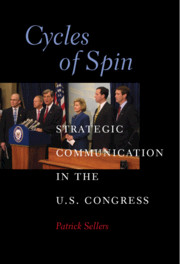References
Published online by Cambridge University Press: 20 January 2010
Summary

- Type
- Chapter
- Information
- Cycles of SpinStrategic Communication in the U.S. Congress, pp. 225 - 250Publisher: Cambridge University PressPrint publication year: 2009



